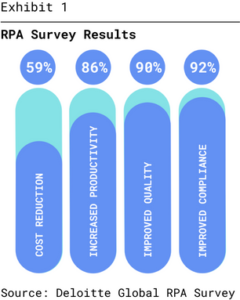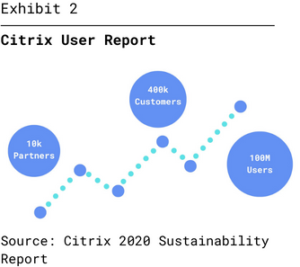- Industries
Industries
- Functions
Functions
- Insights
Insights
- Careers
Careers
- About Us
- Technology
- By Omega Team

Introduction
Citrix is a cloud computing company that provides remote users with the ability to virtually access their applications and desktops. Citrix believes “people should be able to work anywhere and in any way they need,” and achieves this through their virtualization infrastructure and remote access solutions.
Virtualization
Virtualization refers to the process of partitioning a single piece of computer hardware into multiple virtual components. It serves as the backbone of cloud computing, offering efficient and cost-effective solutions through the sharing of essential resources, such as memory and compute, among different parties. Furthermore, it enables elasticity, meaning resources can be easily and rapidly scaled in and out as needed, within the bounds of the hardware. It also reduces technical overhead by allowing IT functions, such as configuration, maintenance, and software updates/patches to be performed centrally instead of individually across a network of physical devices.
Citrix leverages virtualization to offer their clients a simple and secure way to access applications and desktops, regardless of user or machine specifications (e.g., device type, operating system, memory limitations, and hardware architecture). Citrix virtual desktop infrastructures (VDIs) can either be hosted on-premises (Citrix Virtual Apps and Desktop) or in the cloud (Citrix Desktop as a Service), allowing flexibility for all client use cases.
Citrix application virtualization allows users to access applications hosted on a different computer/server or virtual machine. Application virtualization provides simplified and centralized management, scalability, interoperability, and security.
Desktop virtualization allows users to access a virtual desktop either on their local device (utilizing the user’s physical hardware) or remotely. Similar to application virtualization, some of the benefits include increased security, streamlined deployment, and improved resource management.
Automation
Automation is particularly useful when a process involves redundant, repetitive, or mundane tasks (e.g., data entry, data extraction, form submission, etc.). According to the Deloitte Global RPA Survey, 92% of respondents said they noticed improved compliance, 90% recognized improved quality and accuracy, 86% experienced improved productivity and 59% reduced cost.
Figure 1: Deloitte Global RPA Survey

Citrix automation refers to automating processes performed by users within their Citrix virtual environments. Citrix serves more than 10,000 partners, 400,000 customers and 100,000,000 users, across 100 countries.
Given the multitude of companies utilizing Citrix for various applications, it is essential to ensure that designing and implementing automation solutions in Citrix virtual environments is just as feasible as those designed for local environments. However, there is one major challenge developers must overcome.
Figure 2: Citrix 2020 Sustainability Report

Automation in Virtual Environments
Unlike applications running on a local machine (which contain objects and other data models, e.g., the DOM), virtual applications only contain images (a reflection of the application or process). Images can pose a challenge as they lack the structured data and object model necessary for robotic processes to identify data and elements within a specific application or process. However, there are several solutions available to help developers overcome this challenge.
Optical Character Recognition (OCR): OCR is the process of converting an image (containing text or characters) into a machine–readable text format. Leapwork utilizes powerful OCR technology to find and select image and text elements. While OCR can be a powerful resource, it is time consuming, limited by image quality/structure and may be prone to inaccuracies.
Computer Vision: UiPath utilizes a combination of Artificial Intelligence (AI), OCR, and other fuzzy matching algorithms to accurately identify elements within images. Computer vision helps to overcome one of the major limitations of OCR, which is the inability to infer information based on the document. By incorporating AI and fuzzy matching, computer vision can correct many of the inaccuracies that may be encountered with OCR alone.
Software Within Citrix Environment: Microsoft’s Power Automate and SS&C’s Blue Prism embed code within a Citrix environment to overcome the need for OCR or computer vision.
Power Automate allows direct access to the UI elements of the virtual machine. Blue Prism allows for native automation through spying techniques (similar to Power Automate) and surface automation (similar to OCR and computer vision).
Automation Solution Offerings
Customers have numerous options when searching for Citrix automation solutions that best suit their specific needs. Below, several notable companies in this space are highlighted.
- Automai
- Automate Anywhere
- Leapwork
- Microsoft – Power Automate
- SmartBear
- SS&C – Blue Prism
- UIPath
Use Cases
Data Entry: Citrix automation can significantly expedite various data entry tasks, including tax return preparation, expense recording, invoice drafting, and the population and completion of general forms.
Data Extraction: By employing Citrix automation, businesses can effectively extract and capture essential information from applications and documents.
Application Scraping: Citrix automation can be utilized for scraping point-in-time information within applications, enabling tasks such as logging, tracking and data gathering for various use cases.
General Activities: Any activity or task that involves repetitive and relatively simple human actions is an excellent fit for Citrix automation. The examples mentioned above showcase common use cases, but Citrix automation can be applied to a wide and ever-expanding range of daily tasks performed within a Citrix virtual environment.
Conclusion
Citrix enables companies and individuals to access desktop environments and applications remotely, quickly, and with ease. By centralizing IT functions and high-cost resources, Citrix also helps in reducing costs.
Customers utilize Citrix for various reasons and automation within the virtual environment can be beneficial for every customer. Despite the challenges presented by the inherent nature of virtual applications, Citrix automation becomes feasible through numerous solutions, such as OCR, computer vision, and embedded software. Moreover, several specialized companies offer these technologies tailored for use with Citrix. With Citrix automation, companies can significantly reduce the human work involved in redundant, repetitive, and mundane tasks, saving them time and money while increasing quality.
Subscribe
Select topics and stay current with our latest insights
- Functions